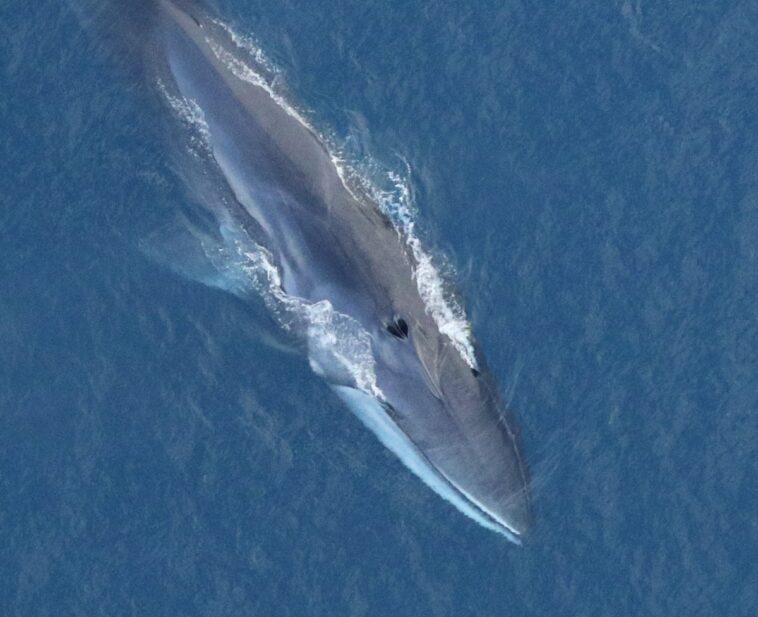While the focus is on North Atlantic right whales in winter, those endangered whales aren’t the only giants off our coast this time of the year.
Humpback surfacing off Little St. Simons earlier this month (DNR/NOAA permit 26919)
On Jan. 8, DNR’s marine mammal team spotted the humpback whale above about 9 miles off Little St. Simons Island. Staff saw the whale’s “blow” in the distance while doing a right whale photo ID and biopsy survey.
As the team approached, the humpback continued surfacing. Its dorsal fin, size and flukes shape showed it was no right whale.
Only a few days before, on Jan. 5, a Clearwater Marine Aquarium Research Institute aerial team surveying for right whales off North Carolina photographed a fin whale about 26 nautical miles east of Masonboro Island.

Fin whale slices blue water far off North Carolina’s coast (Clearwater Marine Aquarium Research Institute/NOAA permit 26919)
Fin whales are the world’s second-largest whale species, reaching 85 feet long and weighing up to 80 tons. Typically found in deep water in all oceans, these sleek whales with V-shaped heads are named for the fin on their back, near the tail.
On a more somber note, the first two melon-headed whales documented stranding in Georgia were found dead — one each — on Tybee Island and Sea Island in December. According to DNR’s Wildlife Conservation Section, which coordinates the Georgia Marine Mammal Standing Network, both animals were thin and their possible cause of death was listed as illness.

The melon-headed whale that stranded on Tybee Island Dec. 26 (Georgia DNR)
Melon-headed whales are small whales found worldwide and mostly in deep, tropical waters, according to NOAA.
The Clearwater Marine Aquarium Research Institute survey that recorded the fin whale was funded by the U.S. Army Corps of Engineers.




GIPHY App Key not set. Please check settings